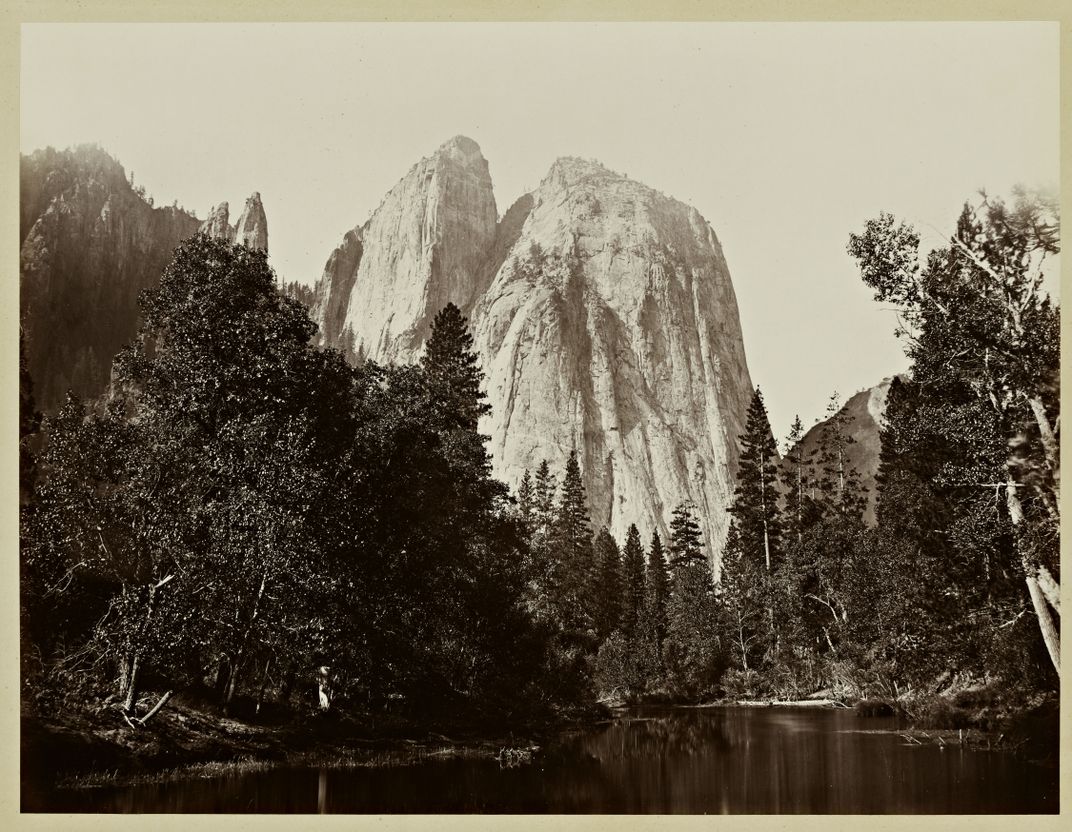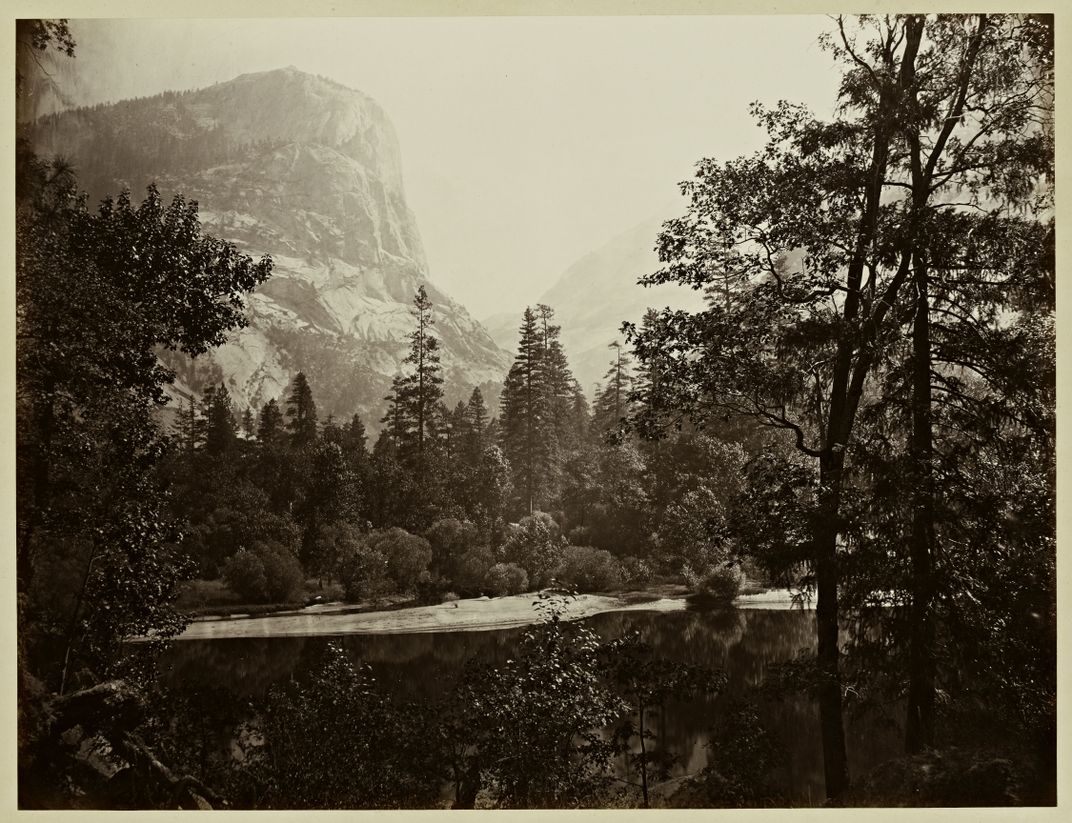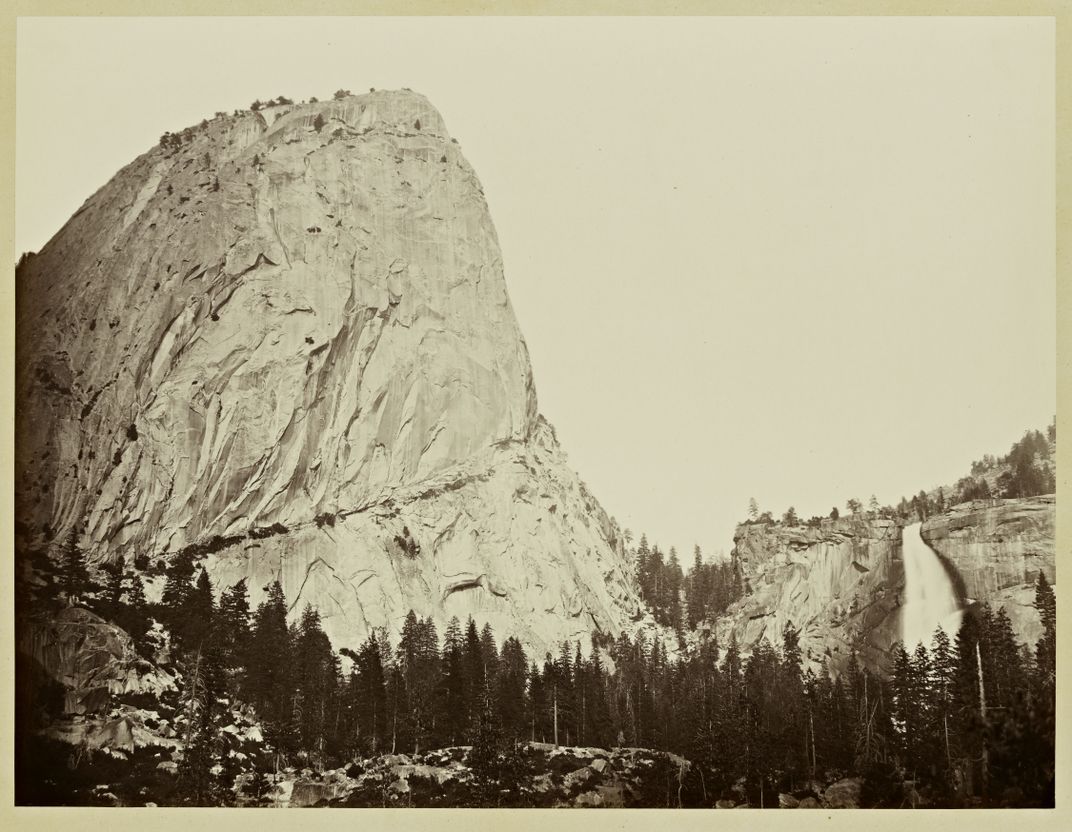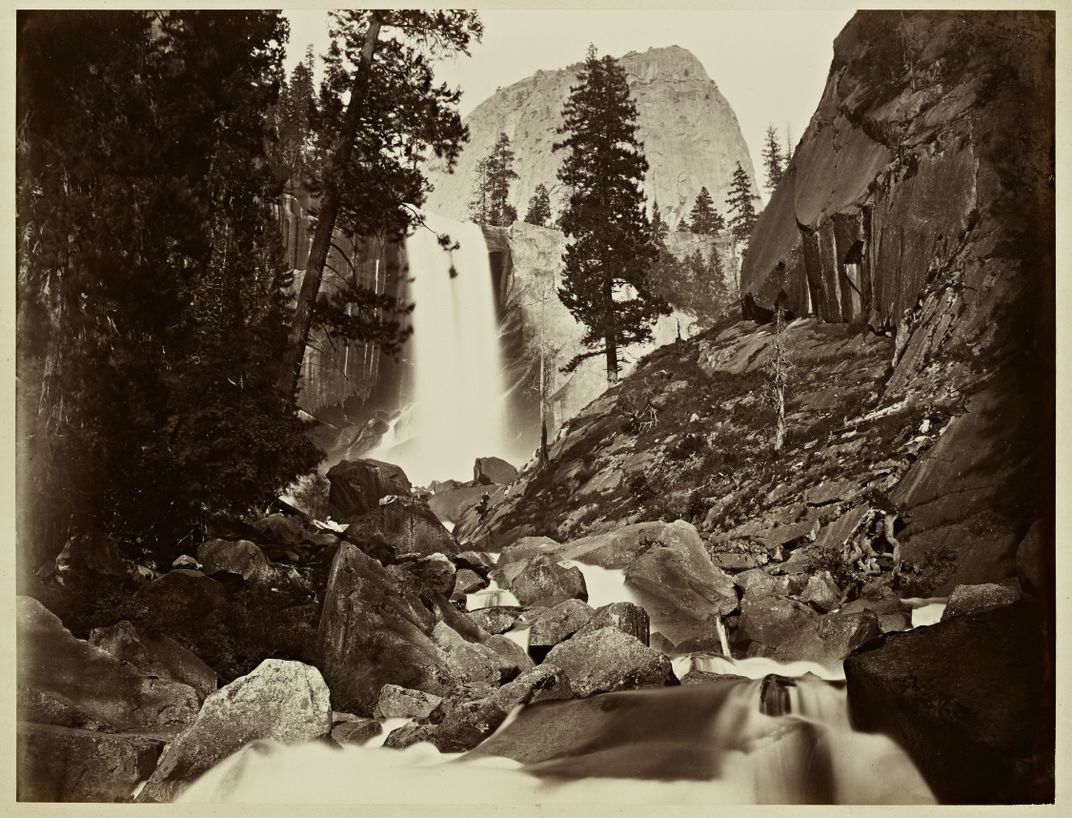These 1861 Photos Helped Convince Abraham Lincoln to Preserve Yosemite for the Public
Stanford University celebrates the National Park’s 150th anniversary with some retro photos
In 1861, a photographer named Carleton Watkins headed 75 miles into the Yosemite Valley with a team of mules, a mobile darkroom tent, and custom camera. That camera, Stanford University’s Cantor Arts Center explains, produced "mammoth" 18- by 22-inch glass-plate negatives.
One hundred and fifty years ago, the Yosemite Valley was just another stunning natural landscape in the American West. But Carleton Watkins' work helped convince President Abraham Lincoln and Congress to pass the Yosemite Valley Grant Act. The legislation preserved the land for public use and set a precedent for the American National Park System.
For the anniversary of the Yosemite Grant, is featuring the works of Watkins from three of his albums. Showcasing 80 original prints, the exhibition will be on view through August 17, 2014. You can see a sampling above, and even more here:



